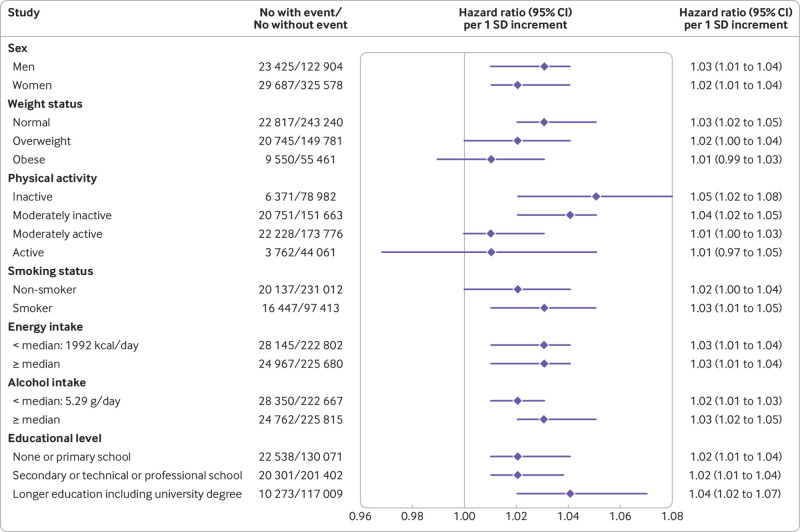Fig 2.
Associations between Food Standards Agency nutrient profiling system (FSAm-NPS) dietary index score and all cause mortality, subgroup analyses from multivariable Cox proportional hazards regression models in the European Prospective Investigation into Cancer and Nutrition (EPIC) cohort, 1992-2015. A higher score indicates a lower nutritional quality of consumed foods. The main model was stratified for age (one year interval) and study centre and adjusted for sex, body mass index, height, educational level (longer education, including university degree, technical or professional school, secondary school, primary school, missing), combined total physical activity (sex specific categories: active, moderately active, moderately inactive, inactive, missing), smoking status and intensity of smoking (current, 1-15 cigarettes daily, 16-25 cigarettes daily, ≥26 cigarettes daily, pipe, cigar, or occasional; current or former, missing; former, quit ≤10 years, quit 11-19 years, quit ≥20 years; non-smoker; missing), baseline alcohol intake, baseline energy intake, and history of cancer (yes, no), cardiovascular diseases (yes, no, missing), and diabetes (yes, no, missing). P for interaction, obtained for each subgroup analysis from the likelihood ratio test of models with and without the interaction term, were: sex, P=0.04; weight status, P=0.22; physical activity, P=0.23; smoking status, P<0.001; energy intake, P=0.05; alcohol intake, P=0.07; educational level, P=0.27

